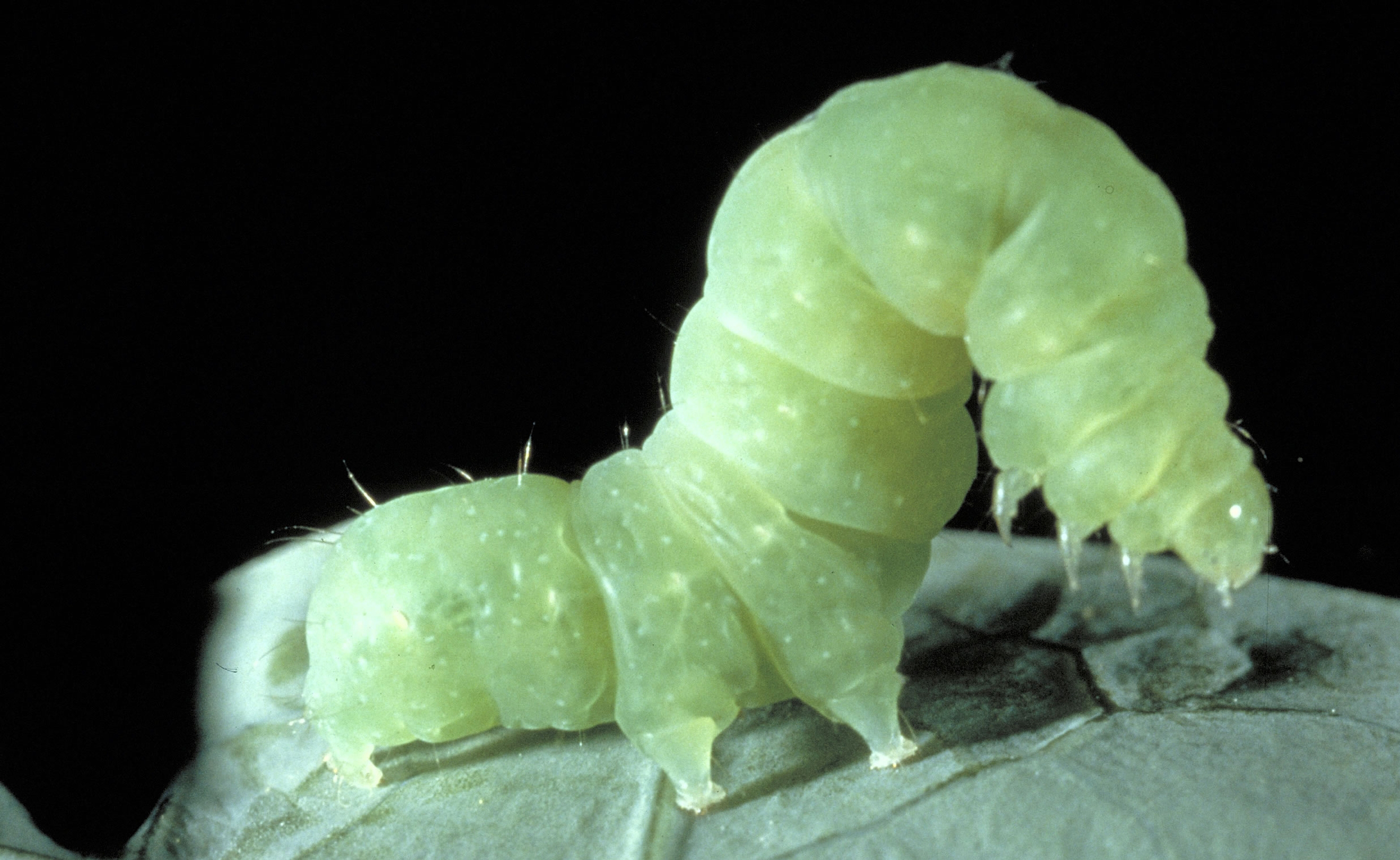Plant chemicals are a trick or treat for insects
MSU researchers’ work may help plant breeders create crop seed mixes less attractive to pests based on plant chemical diversity.

Plants contain a mixture of hundreds of unique chemicals that can attract or repel pests like caterpillars. For the caterpillar, this means they can choose from a buffet of tasty plants with varying phytochemicals. Some choices are a beneficial treat while others are a trick with toxic effects. For researchers, it offers potential to manipulate the chemicals in a mix of crop varieties to create plantings less attractive to pests.
Entomologists at Michigan State University have manipulated phytochemical (plant chemical) diversity using 16 genotypes of tomatoes and measured the response of a common caterpillar, the cabbage looper. Their findings were recently published in the journal Ecology.
“Individual plants have hundreds of chemicals and each has a unique biological effect on interacting organisms, such as herbivores. It has been difficult for scientists to manipulate the dimensions of chemical complexity and test its consequences on insect pests,” said Andrea Glassmire, post-doctoral researcher and lead of the project. “Our methods allowed us to disentangle the dimensions of diversity – the total number of unique chemicals (alpha diversity) compared to the turnover between chemicals (beta diversity).”

The researchers found that plants with different chemical properties could be grouped so that some slowed or deterred feeding. For example, some plants contained acyl sugars that stuck to the caterpillar mouth parts and caused them to eat less. Others were biologically toxic and after tasting those plants, caterpillars moved on to a different plant that could alleviate the toxic effect by feeding on one that balanced with less toxic chemicals. The chemical diversity between the plants, not plant genetic diversity, determined whether caterpillars were deterred or performed better.
“The cabbage looper caterpillars did better when feeding on neighboring plants that were chemically different because the differences allowed them to choose or to switch between plants to better balance their diet,” said Glassmire. “Overall, herbivores interact with a large diversity of plant chemicals at multiple scales, and our results indicate that not all chemical diversity is equal: specific dimensions of phytochemical diversity have unique effects on the dynamics of herbivore performance.”
With this expanded knowledge about the specific chemical traits behind plant-pest interactions, researchers will be able to apply these concepts for use by farmers in their integrated pest management.
Read the full article, “Disentangling dimensions of phytochemical diversity: Alpha and beta have contrasting effects on an insect herbivore,” by Andrea E. Glassmire, Luke N. Zehr and William C. Wetzel; MSU Department of Entomology.
Glassmire’s work is supported in part by a post-doctoral fellowship from the USDA’s National Institute of Food and Agriculture (NIFA), grant 2019-67012-29523 and through a NIFA Agriculture and Food Research Initiative grant 2018-67013-28065 awarded to her advisor Will Wetzel.



 Print
Print Email
Email




